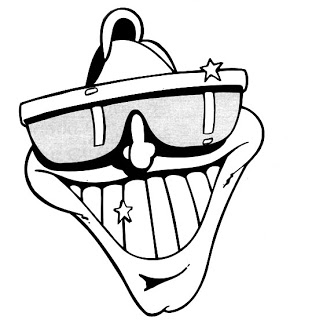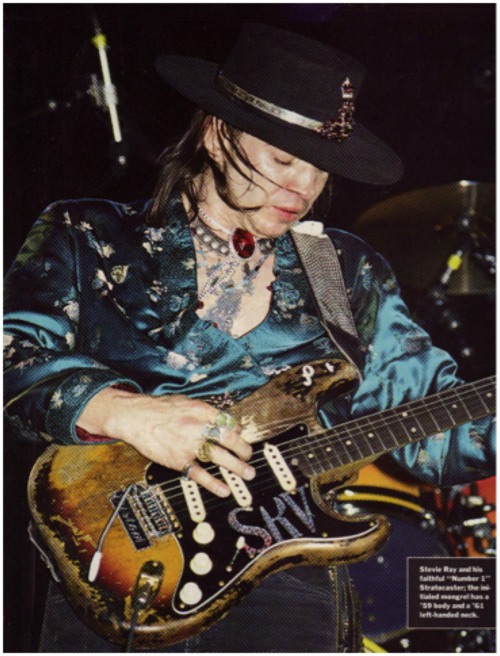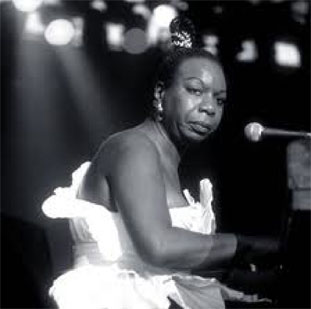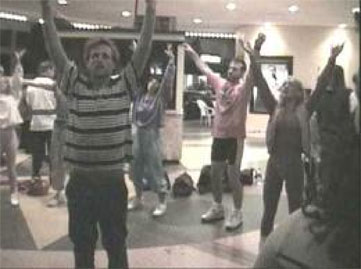

You draw their logo on your school books, wear their badges and bring in their latest album to show off to your mates. Most people have a favourite band when they are teenagers; in my class one boy was mad about the highly polished operatic pop of Queen, for another it was the pretty harmonies of the Beach Boys but my band was much less well known, much more select. The logo I inscribed on my exercise books was Dr Feelgood’s.
While my brother and I played snooker after school on our slightly wonky quarter-sized table it was Dr Feelgood’s debut record, Down by the Jetty that we played over and over until we knew every word, every riff, every note. Like most teenage brothers Graham and I fought over almost everything (we once wrestled each other all through the day stopping only for a dinner break at half time); however one thing we agreed about was how exciting, how brilliant and how cool Dr Feelgood were. Their songs (mostly written by their guitarist, Wilko Johnson were short, punchy little ditties with titles such as Down by the Jetty (how unglamorous is that?) or Twenty Yards Behind Her whose slightly cheeky lyrics appealed to us teenage boys:
If you see my baby walking, I’m not walking by her side
Ain’t no need to look no further cos I won’t be hard to find
I’m walking twenty yards behind her
Cos I love the way she shakes behind.
It wasn’t like the ‘posh’ and old fashioned poetry we read at school which was always about important subjects like war or love; this was about something we could relate to (fancying a girl) and it was written in a colloquial language we could understand. There was also a simplicity, wit and inventiveness to the writing which, looking back, I think appealed to the burgeoning writer in me.
There’s so much confusion in the town when she’s passing through
All the cars are going backwards
And the traffic lights change to blue
I’m walking twenty yards behind her
'Cos I’m frightened of the damage she do.
The album notes described their songs as Rhythm & Blues; it was a type of music we had never heard before and to us it seemed much more powerful, raw and more grown up than the silly glam rock which dominated the pop charts at the time. Instead of high heels and glitter, the band wore the uniform of drab suits which had turned slightly shabby through the punishing schedule of relentless gigging. There was no posing with Dr Feelgood: I never once saw any of the band smile but it wasn’t because they were trying to look ‘hard’ like all the rock bands did in their promotional photos. You had the feeling they were a hard working band who were sincere about their music and they were just knackered from giving it all they’d got.
Anyone who saw Dr Feelgood live (for me it was my first ever gig) would understand why they looked quite so worn out - these guys put on a hell of a show!. The singer, Lee Brilleaux, would punch his arm up and down like a piston by his side as he belted out Wilko’s three minute gems in his ‘gargling with gravel’ voice, stopping occasionally to punctuate the songs with ferocious harmonica solos. These were shrieking, desperate affairs which heightened the tension in the songs to spectacular effect, not least because of his characteristic head shaking. There is a classic blues harp sound created by a technique called a trill in which two adjacent notes are blown repeatedly by moving the harp back and forth over the mouth with the hand. Mr Brilleaux preferred to do this his own way, by holding the harp still while shaking his head vigorously from side to side sending arcs of sweat off in all directions. He looked like a dog shaking off water after a dip in a pond.
But if Lee Brilleaux was a compelling performer Wilko, their mesmerising guitarist, was for me the real star of Dr Feelgood. He played his black telecaster in a very distinctive way, preferring to strike the strings with his four fingers rather than use a pick (you can see this in the photo above). This produced a very percussive style, which, coupled with the over driven trebly tone on his AC30 amplifier turned Wilko into a one man rhythm machine. He stared out at the audience from beneath the flopping fringe of his pudding bowl haircut with a manic stare, like a cast member from One Flew over the Cuckoo’s Nest.
But Wilko was not just a master of rhythm; when it came to a solo it seemed like all the energy he had released only spasmodically in his choppy chord work would suddenly break free causing him to dart and strut around the stage swinging the neck of his guitar left and right with mouth agog in an expression of shocked surprise. It looked like the only thing stopping Wilko from careering off the stage was the coiled guitar lead which eventually seemed to pull him back into place at the end of each short burst of frenzied fret work. It was miraculous to me how he played such brilliant, exciting solos using only the stabbing motion of the back of his fingers whilst moving in such a jerky frenetic manner.
Dr Feelgood garnered a huge cult following and even appeared a few times on TV but I think they were just a bit too powerful and raw to make into mainstream success. Recently there has been a resurgence of interest in them with a documentary being released featuring the great man Wilko himself. I was surprised to find out just how widespread this underground following was, especially amongst more famous guitarists of today. The passing of time has seemed to bring a kind of reverence and respect to the Feelgood phenomenon; in fact the aggressive, tension filled energy of their music has since been noted as being a sort of precuror Punk Rock which emerged just as they disbanded. If you’d like a taste of what Dr Feelgood were like look them up on YouTube.

DESERT ISLAND DISCS
Favourite Songs

My Earliest Musical Influence
Dr Feelgood

My Musical Journey
Refinding My Musical Mojo

Strange Fruit
The History of
a Bittersweet Classic

Fatboy Slim's
'Praise You' Video
A Brilliant Dance Routine

A Philosophical &
Political Conundrum
The Making of Paul Simon's
'Graceland' Album